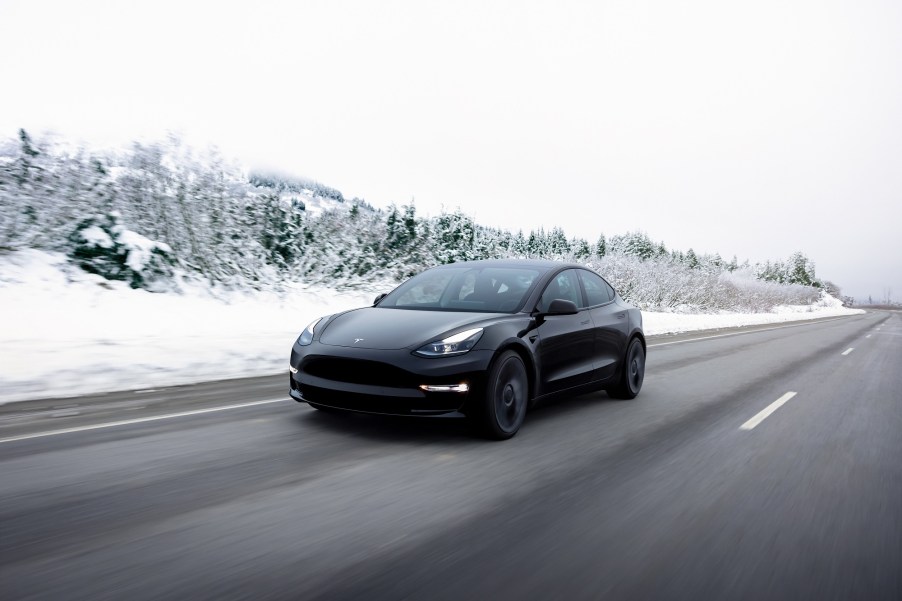
EVs in the Snow: Will Your EV Leave You Stranded?
Electric vehicles (EVs) have a well-documented propensity to lose battery capacity in cold weather. However, are the effects of the cold enough to make an EV untenable for your next new or used car purchase? Moreover, will cold, ice, and snow leave you stranded in your EV, or can your EV deliver in the snow?
Do EVs work in cold weather?
While EVs work in cold weather, there is a caveat. EVs, specifically battery electric vehicles (BEVs), tend to lose significant charge levels when exposed to dramatic cold. For instance, at 20 degrees Fahrenheit, a temperature at which it could easily snow, EVs could lose nearly half of the charge in their batteries.

AAA says that prolonged exposure to temperatures that low could compromise an EV’s battery performance by as much as 41%. While your EV might handle fine in the snow, it might have difficulty getting you to and from your destination. For example, a Mini Hardtop EV could lose around 46 miles from its 114-mile range. That could leave an EV owner stranded if they don’t plan ahead.
Are EVs good in the snow?
Despite the unfortunate battery depletion in cold weather, some EVs are good in the snow. For instance, EVs with all-wheel drive (AWD) send power to all four wheels instead of just the front or rear two. Dual or tri-motor setups promise not just torquey launches with gobs of grip; they also prove that EVs can drive in snow with traction to spare.

Vehicles like the Tesla Model S Dual Motor or Ford Mustang Mach-E California Route 1 have individual motors that send electric torque to all four wheels, duplicating grip in inclement weather. Of course, the best way to ensure that your EV is good in the snow is to outfit it with seasonally appropriate-tires. Winter or studded tires can increase your vehicle’s grip exponentially compared to all-season or summer tires.
Are RWD EVs good in snow?
Rear-wheel drive (RWD) EVs can be good in the snow with care and winter-ready tires. However, RWD is historically the worst kind of application for inclement weather among the popular options. High-horsepower RWD vehicles like Ford Mustangs and Dodge Challengers tend to break traction and induce slides compared to more sure-footed AWD and FWD applications. As a result, AWD EVs will perform better in snow, rain, and other inclement weather situations.

Can you warm up an electric car?
Owners can warm the cabins of their EVs before driving in snow and cold winter weather. However, unlike internal combustion engine (ICE) vehicles, electric cars don’t require any warm-up period for lubrication. Older cars, especially carbureted vehicles, require longer periods to warm up and lubricate before reaching high RPMs. Moreover, EVs don’t cause harmful emissions while on and warming the cabin with the onboard heater.
Of course, any accessory you use, including heat or air conditioning, will use energy, decreasing the already cold-compromised range of your EV. Moreover, most EVs use energy from the grid, which could come from fossil fuels like coal-burning plants depending on location and even the time of day.



